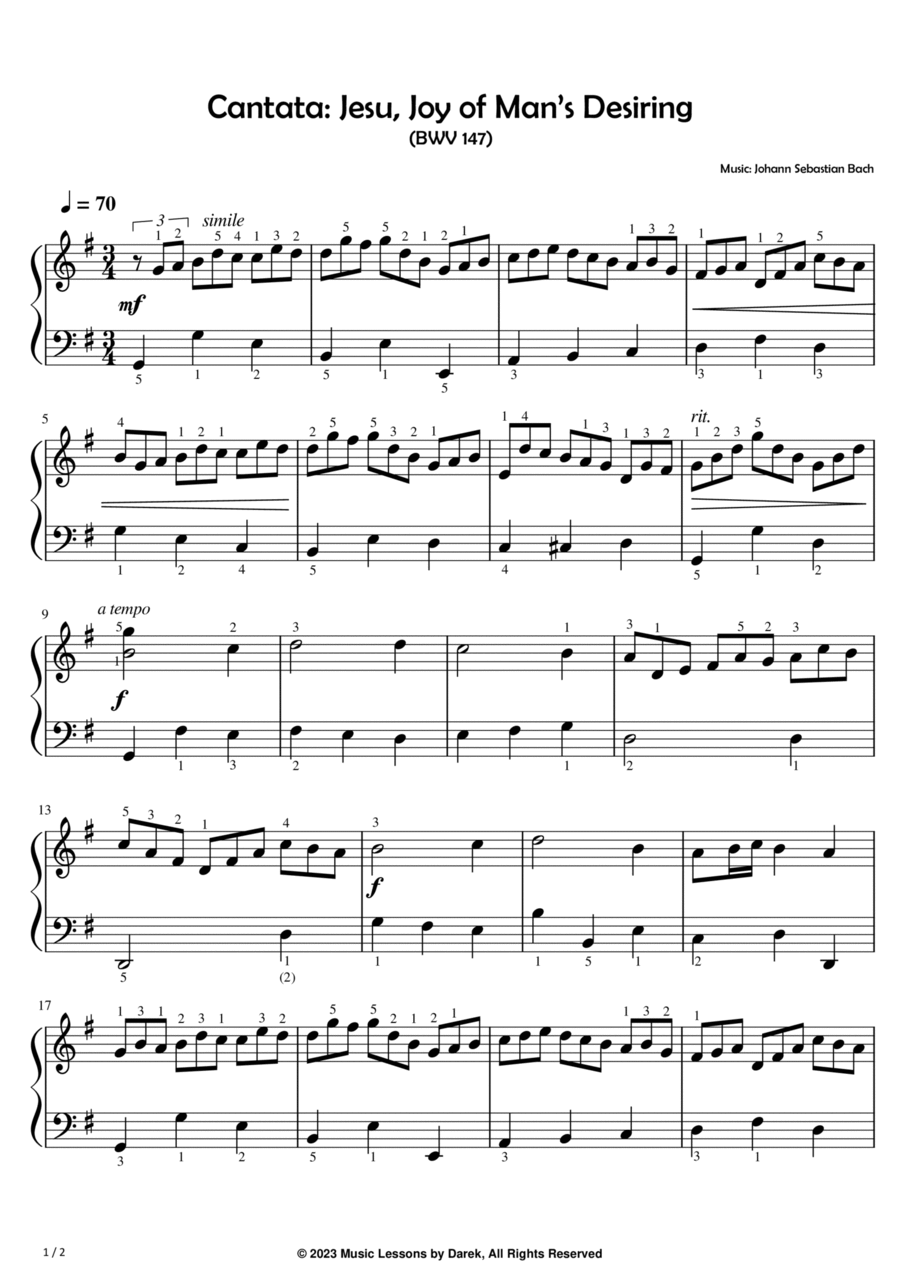Easy Piano - Level 2 - Digital Download SKU: A0.1261974 Composed by Johann Sebastian Bach. Arranged by Darek. Baroque,Classical,Early Music. Score. 2 pages. Darek #855059. Published by Darek (A0.1261974). Cantata: Jesu, Joy of Man’s Desiring (EASY PIANO) (BWV 147) [Johann Sebastian Bach]Simplified arrangement for pianists of Cantata: Jesu, Joy of Man’s Desiring (BWV 147) by Johann Sebastian Bach. Easy version for pianists | Easy piano arrangement. Included: Fingering, Dynamics, Articulations and video Youtube tutorial. Immerse yourself in the timeless beauty of Johann Sebastian Bach's Cantata: Jesu, Joy of Man's Desiring (BWV 147) with this easy-level piano sheet music edition, specifically tailored for beginner pianists. Experience the uplifting melodies of this iconic composition, transporting yourself to the splendor of the Baroque era. I have thoughtfully prepared this sheet music to empower aspiring pianists like you to embrace the beauty of Bach's masterpiece. With detailed fingering suggestions, you will effortlessly navigate the gentle yet intricate passages, allowing your hands to gracefully interpret the enchanting melody. Captivate the essence of the piece with the aid of comprehensive articulation markings, guiding you to shape each phrase with precision and expressiveness. The inclusion of precise dynamics notation further enhances your interpretation, allowing you to convey the range of emotions embedded within this renowned composition. To enhance your learning experience, I have included a valuable YouTube tutorial video that offers insightful guidance, tips, and demonstrations. This visual resource will inspire and empower you to master the nuances of Jesu, Joy of Man's Desiring at your own pace, unlocking your potential as a pianist. This sheet music is carefully designed for beginner pianists, providing an accessible entry point into Bach's remarkable repertoire. Embrace the challenge and relish the joy of performing a piece from one of the greatest composers in history. Join the community of passionate pianists who have embraced the enduring beauty of Jesu, Joy of Man's Desiring. Whether you are a novice pianist seeking a captivating musical experience or an intermediate player looking to expand your repertoire, this sheet music is an ideal choice. Unlock your musicality and let the harmonious melodies of Bach resonate through your fingertips. Immerse yourself in the richness of the Baroque era, nurturing your skills and cultivating a deep connection with the piano. Don't miss the opportunity to add this timeless composition to your repertoire and captivate audiences with your heartfelt performance. Keywords: Cantata: Jesu, Joy of Man's Desiring, BWV 147, Johann Sebastian Bach, piano sheet music, easy level, beginner pianists, fingering, articulation, dynamics, YouTube tutorial, Baroque era, music, pianists, composition, repertoire, musical experience, uplifting melodies, enchanting melody.
